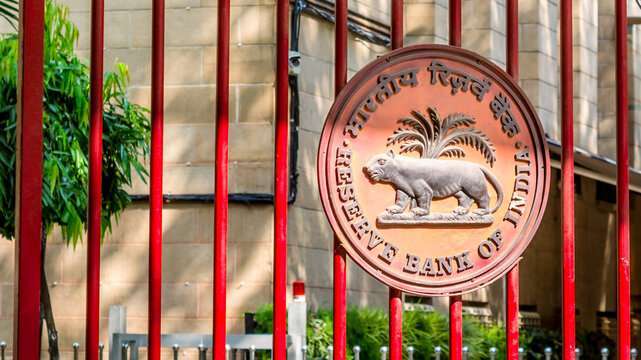RBI Tax Free Bonds are issued by the Reserve Bank of India (RBI) to raise funds for various infrastructure projects. These bonds offer tax-free returns to investors, making them an attractive investment option. They usually have a long tenure, ranging from 10 to 20 years, and provide a fixed rate of interest. Investors benefit from the dual advantage of regular income and tax savings, making RBI Tax Free Bonds a popular choice among those seeking stable, tax-efficient investments.
Rbi Tax Free Bonds
RBI Tax Free Bonds are a type of investment instrument issued by the Reserve Bank of India (RBI) that offer attractive benefits to investors. These bonds are designed to raise funds for crucial infrastructure projects across the country. What sets them apart is their tax-free status on the interest earned, making them particularly appealing to investors looking to maximize their returns while minimizing tax liabilities.

Investors in RBI Tax Free Bonds receive a fixed rate of interest on their investment, which is not subject to income tax. This makes them an excellent choice for individuals in higher tax brackets seeking to diversify their investment portfolio while enjoying the benefits of tax savings. These bonds typically have a longer tenure, often ranging from 10 to 20 years, providing investors with a stable and predictable source of income over the long term.
How To Buy RBI Bonds 2024?
To buy RBI bonds, investors can follow these general steps
1). Eligibility Check- Ensure you meet the eligibility criteria set by the RBI or the authorized institutions selling the bonds. Typically, individuals, Hindu Undivided Families (HUFs), and certain categories of institutional investors are eligible to invest in RBI bonds.
2). Choose the Type of RBI Bond- Decide which type of RBI bond you want to invest in based on your investment goals and risk appetite. RBI issues different types of bonds, such as taxable bonds, tax-free bonds, savings bonds, etc.
3). Open a Demat Account (if required)- If the RBI bonds are in dematerialized (Demat) form, you will need to open a Demat account with a Depository Participant (DP). Not all RBI bonds are issued in Demat form, so check the requirements.
4). Contact Authorised Intermediaries- Approach authorized institutions or intermediaries who deal with RBI bonds. These include banks, financial institutions, designated post offices, and stock exchanges where the bonds are listed.
5). Submit Application Form- Obtain the application form from the authorized intermediary, which includes details such as the amount you wish to invest, personal information, and payment details.
6). KYC Compliance- Complete the Know Your Customer (KYC) process as required by the intermediary. This involves providing proof of identity, address, and other necessary documents.
7). Payment- Make the payment for the desired amount of RBI bonds as specified in the application form. This can usually be done through cheque, demand draft, online transfer, or other approved payment methods.
8). Receive Allotment- After processing your application and payment, you will receive an allotment of RBI bonds. This may be in physical or dematerialized form, depending on the bond type and your preference.
9). Hold or Trade- You can choose to hold the RBI bonds till maturity to receive the fixed interest payments and the principal amount back. Alternatively, if the bonds are listed on the stock exchange, you can trade them in the secondary market before maturity.
10). Stay Informed- Keep track of the maturity date, interest payments, and any other relevant updates related to your RBI bonds. This will help you manage your investment effectively.
It’s crucial to note that the process might vary slightly based on the specific type of RBI bond you are interested in and the intermediary through which you choose to invest. Always ensure to read the terms and conditions, prospectus, and other related documents before investing in RBI bonds.
What Is the Lock-In Period for RBI Bonds?
The lock-in period for RBI bonds can vary based on the specific type of bond. Here are the general guidelines for different types of RBI bonds-
Taxable Bonds
The lock-in period for RBI taxable bonds is typically 5 to 7 years. This means that investors cannot redeem or sell their bonds before this period without incurring penalties or losing out on some interest earnings.
Tax-Free Bonds
For RBI tax-free bonds, the lock-in period is usually longer, often ranging from 10 to 15 years. Investors are required to hold these bonds for a specified period before they can sell or redeem them without penalties.
Savings Bonds
RBI Savings Bonds have a lock-in period of 7 years. During this time, investors cannot withdraw their funds or sell the bonds.
Is It Safe To Invest in RBI Floating Rate Bonds?
Investing in RBI Floating Rate Bonds is generally considered safe due to the backing of the Reserve Bank of India (RBI), which is the central bank and monetary authority of India. Here are some reasons why these bonds are often viewed as a safe investment.

Government Backing- RBI Floating Rate Bonds are issued by the Reserve Bank of India, which is backed by the GOI. This government backing provides a high level of safety and assurance for investors.
Stable and Secure Investment- As a government-backed instrument, RBI Floating Rate Bonds are considered among the safest investment options available. The RBI’s strong financial position and credibility add to the security of these bonds.
Low Default Risk- The risk of default on RBI Floating Rate Bonds is extremely low because they are issued by the central bank, which has the authority to print money and manage the country’s monetary policy.
Regular Interest Payments- These bonds offer a regular and predetermined interest payment, which adds to their attractiveness for investors seeking a steady income stream.
Market Stability- The floating interest rate on these bonds is usually linked to a benchmark rate, such as the RBI’s repo rate. This can provide a degree of protection against interest rate fluctuations.
What Is the Interest Rate on RBI Taxable Bonds?
The interest rate on RBI taxable bonds can vary and is subject to change based on market conditions and RBI policies. The interest rates on these bonds typically range from around 6% to 7.75% per annum.
Bottomline:-
RBI Tax Free Bonds are that they offer investors an attractive opportunity to earn tax-free returns on their investments. These bonds are issued by the Reserve Bank of India (RBI) and are designed to fund crucial infrastructure projects across the country.
Investing in RBI Tax Free Bonds can provide a dual advantage of stable, fixed-rate returns along with tax savings. The interest earned on these bonds is exempt from income tax, making them a popular choice for investors looking to maximize their post-tax returns.
Also Read










